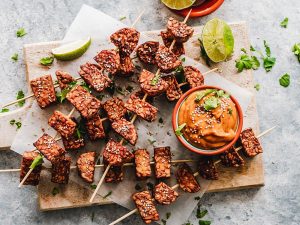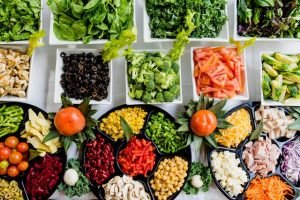Allspice is one of the most commonly used spices in the world. It is a very versatile spice that can be used in both sweet and savory dishes. It has a flavor similar to a combination of cinnamon, cloves and nutmeg, which makes it a great addition to many different dishes. To learn more about allspice, this article will explain the history, uses and taste of this wonderful spice.
Locations Of Allspice
Allspice is native to Jamaica and Central America. The tree grows wild as well as being cultivated for commercial use in these areas and some others around the world. In North America allspice is grown mainly in Florida where it is commercially produced on a large scale. The state of Hawaii also grows significant amounts of the spice crop each year.
Description Of Allspice
This spice is actually made up of the dried berries of an evergreen tree that are picked when they are ripe and then dried. The berries look something like large peppercorns with a brown outer covering that gives way to a dark red fleshy center with white seeds inside. This hard looking fruit becomes very soft when dried making it easy to crush into powder form for cooking use. Allspice is available whole, ground or as an extract which
The name of the spice is a bit confusing. It’s not a mixture of other spices, it is the dried and unripe fruit from one particular tree. The “spice” part comes from an old English word for a type of pepper. But allspice is not related to black pepper and its berries are not related to peppercorns.
How to Use Allspice in Cooking
Allspice is very pungent when fresh, so you may be surprised that it plays such a small role in cooking. If you can get your hands on some, you can grind or crush the little berries to make them more powerful, or make them into a tea. But that’s probably unnecessary; ground allspice works fine as long as you use it in moderation.
Allspice is most often used in sweet dishes like desserts and cakes, but also in savory dishes with an apple-pie kind of flavor like pork or turkey stuffing. It goes especially well with sweet potatoes and root vegetables like carrots and parsnips.
It’s also used in pickling recipes and can be made into essential oils for perfumes and soaps; allspice essential oil has been used for thousands of years for medicinal purposes.
Allspice has a flavor all its own, unique to this small Caribbean tree. It is an essential ingredient in jerk seasoning and barbecue rubs. In the Middle East allspice is used in savory dishes such as stews and eggplant salads. The allspice tree also yields a pleasantly aromatic oil which can be used as an aftershave lotion or perfume.
It’s easy to grow your own allspice plant, even here in N.Y.C., where I live — just place 3 or 4 high quality, but untreated (no pesticides) seeds into a pot with moist potting soil and place it in a sunny window. I’ve had great luck with this technique.
Here are some tips for planting your own allspice plant:
1) Use sterilized soil from the garden store;
2) Treat the seeds by soaking them overnight in a water solution of mild soap (to eliminate insect eggs) and salt (to discourage fungus growth);
3) Place seeds on a flat layer of moist soil, not buried too deeply;
4) Cover with plastic wrap to create a dark, warm environment;
5) Once leaves appear, remove plastic wrap and move to sunnier location;
6) When seed
Allspice is the dried berry of a tree native to the West Indies and South America. Its name comes from its flavor profile, which combines several spices: clove, cinnamon, and nutmeg. Allspice is used in many cuisines and has a long history of use in both Europe and Asia.
allspice, also known as pimento or Jamaica pepper, is the dried fruit of a mid-sized evergreen tree native to the Caribbean and South America. In the U.S., it’s most often used in the cuisines of southern United States, particularly in Louisiana cuisine.
Jamaican allspice is noticeably hotter than its American counterpart. The two varieties are sometimes used together for cooking.
Allspice is a spice that smells and tastes like a combination of cinnamon, cloves, and nutmeg. You can buy it whole, or in powdered form. Whole allspice berries have to be ground before you use them. (You can also buy already ground allspice.) It is common in many English-speaking countries, including the United States, Jamaica, and India.
The taste of allspice is like a mix of other spices: cloves, cinnamon, nutmeg, pimento (allspice berries look like peppercorns), juniper berries, ginger root, and mace. Allspice was part of the original “cocktail,” as in the drink made with rum and bitters now called a “cocktail.”
Allspice has been described as having a flavor reminiscent of a mixture of cinnamon and cloves with a peppery note reminiscent of black pepper and sometimes a woody or even slightly floral aroma reminiscent of sage or camphor. The strong scent and taste led to comparisons to pepper grinders or nutmeg graters by those unaccustomed to it in the past.
Allspice is the dried unripe berry of Pimenta dioica (also known as Pimenta acris),
Allspice (canela de Jamaica in Spanish) is the dried, unripe berry of the Pimenta dioica plant. It originated in the West Indies but is now also grown in Java and other islands of Indonesia. Allspice is one of the most important ingredients in Jamaican jerk seasoning.
Allspice is also sometimes sold as pimenta, though it differs from the true pimento (or pimiento), which is the red, ripe berry of a different plant.
Allspice is dark brown and wrinkled, with a thick, oily outer skin. It has a woody, smoky aroma and a warm taste that is similar to a combination of cinnamon, cloves, nutmeg and peppers.
Allspice can be found at grocery stores either ground or in whole berries in the spice section. Ground allspice will keep for several months if kept cool and dry; whole berries can be stored in a cool place for several years.


